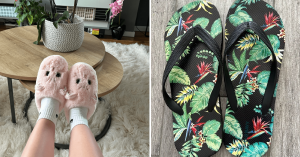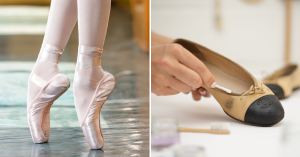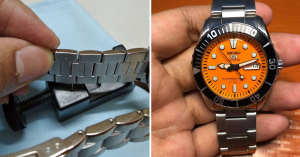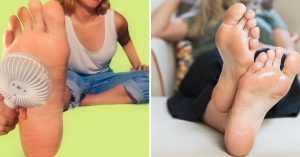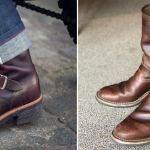The Best Fluffy Pancakes recipe you will fall in love with. Full of tips and tricks to help you make the best pancakes.
How to Clean Sandals
When the sun is shining and the outdoors is calling, nothing feels better than slipping into your favorite pair of sandals. Whether you’re a rugged trailblazer, a chic fashionista, or an eco-conscious consumer, knowing how to keep your sandals clean is essential. Not only will your footwear look great, but it will also last longer, saving you money and reducing waste.
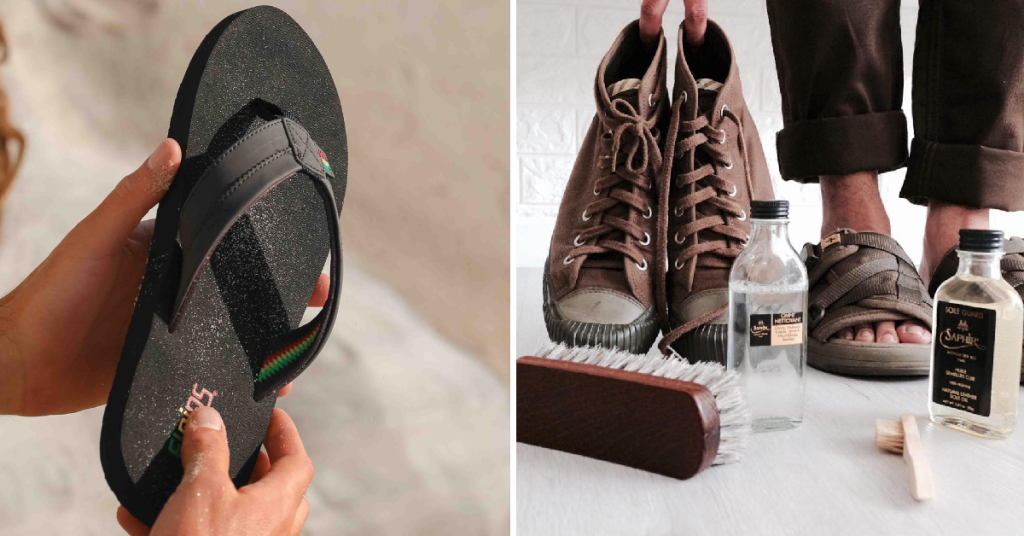
In this comprehensive guide, we’ll walk you through everything you need to know about cleaning your sandals. From materials needed to step-by-step instructions, we’ve got you covered. By the end of this post, you’ll have the knowledge and confidence to keep your sandals in top condition all year round.
Materials Needed for Cleaning Sandals
Before we get started, let’s gather all the essential materials. Having the right tools at your disposal will make the cleaning process more efficient and effective.
- Mild Detergent: A gentle cleaner that won’t damage delicate materials.
- Soft-Bristled Brush: Perfect for scrubbing away dirt without scratching surfaces.
- Microfiber Cloths: These are great for wiping down and drying your sandals without leaving lint behind.
- Baking Soda: An excellent natural deodorizer.
- White Vinegar: A powerful, eco-friendly cleaner.
- Old Toothbrush: Ideal for getting into those hard-to-reach areas.
- Warm Water: Essential for rinsing and mixing with detergents.
- Towels: For drying your sandals properly after cleaning.
With these materials, you’re well-equipped to tackle any dirt or grime that may be lingering on your sandals.
Step-by-Step Guide to Cleaning Sandals
Cleaning your sandals doesn’t need to be a daunting task. Follow these simple steps to ensure your sandals are spotless and ready for your next adventure.
Cleaning Leather Sandals
Leather sandals are stylish and durable but require special care. Here’s how to clean them without causing damage:
Remove Loose Dirt: Begin by using a soft-bristled brush to carefully dust off any loose dirt or debris from the surface of the sandals. This step ensures that no abrasive particles scratch the leather during the cleaning process. Pay special attention to seams and crevices where dirt tends to accumulate.
Prepare Cleaning Solution: In a small bowl, mix a small amount of mild detergent with warm water, ensuring that the detergent is fully dissolved to prevent any residue. The mixture should be gentle enough to not damage the leather while still effective in cleaning.
Clean the Leather: Take a microfiber cloth and dip it into the prepared cleaning solution. Wring out any excess liquid to avoid oversaturating the leather. Gently wipe down the leather surfaces in circular motions, which helps to lift dirt without causing streaks. Focus on stained or heavily soiled areas for thorough cleaning.
Rinse and Dry: Take a clean, damp cloth and wipe away any soap residue, ensuring no detergent is left on the leather, as it can dry out the material over time. Afterwards, pat the sandals dry with a towel to remove excess moisture. Allow them to air dry completely in a well-ventilated area, away from direct sunlight or heat sources that can cause the leather to crack or warp.
Cleaning Fabric and Suede Sandals
Fabric and suede can be tricky to clean, but with the right approach, you can get them looking new again:
Brush Off Dirt: Use an old toothbrush or a soft-bristled brush to gently remove any loose dirt or debris from the fabric or suede of your sandals. Be thorough but gentle, ensuring you reach into crevices and seams where dirt might accumulate. This step helps prevent dirt from embedding deeper during washing.
Spot Clean Stains: Mix a small amount of mild detergent with lukewarm water to create a gentle cleaning solution. Use a clean, soft cloth to gently blot the stained areas, applying light pressure. Avoid rubbing, as this can damage the fabric or spread the stain. For stubborn stains, let the detergent solution sit for a few minutes before blotting again.
Rinse and Pat Dry: After cleaning, take a clean cloth dipped in water to carefully remove any remaining soap residue from the sandals. It’s important to ensure no detergent is left on the fabric or suede, as it can cause discoloration. Blot excess moisture with a dry towel, pressing gently to absorb as much water as possible. Allow the sandals to air dry naturally in a well-ventilated area, away from direct sunlight or heat sources, to prevent damage.
Cleaning Rubber and Plastic Sandals
Rubber and plastic sandals are generally easier to clean due to their durable materials:
Remove Loose Dirt: Begin by gently rinsing the sandals under warm water to loosen and wash away any surface dirt. You can use your hands to lightly rub the surface, ensuring that any debris trapped in the soles or straps is dislodged. This initial rinse helps prevent dirt from embedding deeper into the material during the cleaning process.
Scrub Thoroughly: Prepare a cleaning solution by mixing a few drops of mild detergent with water in a small bowl or bucket. Use a soft-bristled brush, such as an old toothbrush or a shoe brush, to apply the solution to the sandals. Focus on scrubbing areas with grooves or textured surfaces, as dirt tends to accumulate there. Ensure you cover the entire sandal, including the straps and footbed, using circular motions to lift stubborn stains and grime effectively.
Rinse and Dry: After scrubbing, thoroughly rinse the sandals with clean water to remove all traces of soap and detergent. Check for any remaining suds or residue, as these can cause irritation over time. Once rinsed, gently pat the sandals with a towel to remove excess water. Then, place them in a well-ventilated area to air dry completely, avoiding direct sunlight or heat sources that could damage the material. Make sure the sandals are fully dry before wearing them again to maintain their shape and comfort.
Removing Stubborn Stains and Odors
Sometimes, regular cleaning isn’t enough to remove tough stains or bad odors:
Baking Soda Paste: Mix baking soda with a bit of water until you form a thick paste. Apply it generously to stained areas on your sandals. Use a soft brush or an old toothbrush to gently scrub the paste into the fabric or material. This abrasive action helps lift stains while the baking soda neutralizes odors. After scrubbing, let the paste sit for at least 15 minutes before rinsing off with warm water. Repeat if necessary for stubborn stains.
White Vinegar Spray: For tackling odors and bacteria, create a solution of equal parts white vinegar and water in a spray bottle. Thoroughly spray the inside of your sandals, ensuring you cover all areas, especially where your feet make contact. Allow the sandals to air dry completely in a well-ventilated area. The vinegar’s acetic acid content works as a natural disinfectant, effectively killing odor-causing bacteria.
Sunlight: Place your sandals in direct sunlight for several hours. Ensure they are positioned so that all sides receive sunlight. The UV rays from the sun act as a natural sanitizer, killing bacteria and helping to fade stains. It’s a simple and effective method that also leaves your sandals smelling fresh.
Essential Oil Freshener: Add a few drops of essential oils like tea tree or lavender to a cotton ball. Place the cotton balls inside the sandals overnight. These oils have natural antibacterial properties and leave a pleasant scent.
Freezing Method: Seal your sandals in a plastic bag and place them in the freezer overnight. The low temperature kills odor-causing bacteria. Make sure to let them return to room temperature before wearing them again.
Soap and Water: For a basic clean, use mild soap and warm water. Gently scrub the sandals with a soft brush and rinse thoroughly. This method is best for regular maintenance to keep your sandals looking clean.
Drying Sandals Properly to Prevent Damage
Proper drying is crucial to prevent your sandals from warping or developing mold:
Pat Dry with Towels: Gently use towels to absorb as much moisture as possible from your sandals. Make sure to cover all areas, including straps and soles, to minimize water retention. This step is crucial for preventing mold and mildew growth.
Air Dry: After patting them dry, place your sandals in a well-ventilated area, preferably with good airflow, such as near an open window or fan. Keep them away from direct sunlight or heat sources, like dryers or heaters, which can cause warping or material damage. Allow ample time for them to dry completely.
Stuff with Paper: For leather or fabric sandals, stuffing them with crumpled newspaper or plain paper towels can help maintain their shape as they dry. This also aids in quicker moisture absorption from the interior. Change the paper frequently if it becomes too damp to ensure effective drying.
Special Care for Sandals with Odor Issues
If your sandals develop persistent odors, a more intensive cleaning approach may be necessary:
Deep Clean: Follow the regular cleaning steps, but pay extra attention to scrubbing all areas thoroughly. Use a soft brush to reach crevices and seams where dirt and grime often accumulate. After cleaning, rinse your sandals well and allow them to air dry completely to prevent any moisture buildup, which can lead to odors or mold.
Deodorize: Sprinkle baking soda inside your sandals and leave them overnight. This natural deodorizer absorbs moisture and neutralizes odors. Shake out any excess powder the next day. For better results, repeat this process weekly, especially if you wear your sandals frequently.
Use Essential Oils: Place a few drops of essential oils like tea tree or lavender on a cotton ball and leave it inside your sandals overnight to help neutralize odors. These oils not only provide a pleasant scent but also have antibacterial properties that help keep your sandals fresh. You can experiment with different oil blends to find a combination you enjoy.
Eco-friendly Cleaning Alternatives
For those who are eco-conscious, choosing environmentally friendly cleaning methods can make a big difference:
- Natural Detergents: Opt for eco-friendly detergents free of harsh chemicals.
- DIY Cleaners: Use household items like baking soda, white vinegar, and lemon juice to clean your sandals effectively.
- Reusable Cloths: Choose microfiber cloths that can be washed and reused instead of disposable wipes.
- Sun Drying: After cleaning, let your sandals dry in the sun to naturally eliminate bacteria and odors.
- Shoe Deodorizers: Use natural deodorizers like cedar shoe inserts or sachets filled with dried lavender to keep them fresh.
- Regular Maintenance: Wipe down your sandals regularly to prevent dirt build-up and prolong their lifespan.
Storing and Maintaining Clean Sandals
Proper storage can extend the life of your sandals and keep them in prime condition:
- Clean Before Storing: Always clean your sandals before putting them away for the season.
- Cool, Dry Place: Store your sandals in a cool, dry place to prevent moisture buildup and damage.
- Use Shoe Bags: Place each pair in a cloth shoe bag to protect them from dust and light.
- Avoid Direct Sunlight: Keep your sandals out of direct sunlight to prevent fading and material degradation.
- Stuff with Tissue: Fill sandals with tissue paper to help maintain their shape during storage.
- Check Regularly: Periodically check on stored sandals to ensure they remain in good condition.
Tips and Tricks for Maintaining Sandals
Maintaining your sandals regularly will keep them looking great and extend their lifespan:
- Regular Cleanings: Clean your sandals every few weeks to prevent dirt buildup.
- Waterproofing: Apply a waterproof spray to leather and fabric sandals to protect them from moisture.
- Check for Wear and Tear: Inspect your sandals regularly for signs of wear and fix any issues promptly to avoid further damage.
- Proper Storage: Store sandals in a cool, dry place away from direct sunlight to prevent fading and damage.
- Odor Control: Use baking soda or specialized foot spray to keep sandals smelling fresh.
- Adjust Straps: Regularly adjust straps to ensure a comfortable and secure fit.
FAQs about Cleaning Sandals
How often should I clean my sandals?
It is best to clean your sandals every few weeks or after each wear, depending on how frequently you wear them.
What do I do if my sandals start to smell?
Try using baking soda, essential oils, or specialized foot spray to eliminate odors. If the issue persists, follow the deep cleaning method mentioned above.
Can I put my sandals in the washing machine?
It is not recommended as it can cause damage to certain materials. Handwashing with mild soap and water is a safer option.
Is it necessary to let my sandals air dry or can I use a dryer?
Air drying is the best method to avoid warping or damage. Using a dryer can cause shrinkage, warping, or material damage.
Can I store my sandals in plastic bags?
It is not recommended as it can trap moisture and lead to mold growth. Cloth shoe bags are a better storage option.
How do I know if my sandals need to be replaced?
If they show signs of excessive wear and tear or no longer provide proper support or comfort, it may be time for a new pair.
Conclusion
Keeping your sandals clean and well-maintained ensures they stay comfortable, stylish, and functional for all your adventures. With the tips and steps outlined in this guide, you now have all the knowledge you need to care for your sandals like a pro.
Remember, clean sandals not only look good but also last longer, which is a win for your wallet and the environment. Ready to step up your sandal game? Start cleaning today and enjoy the benefits of fresh, well-maintained footwear. Happy cleaning!
